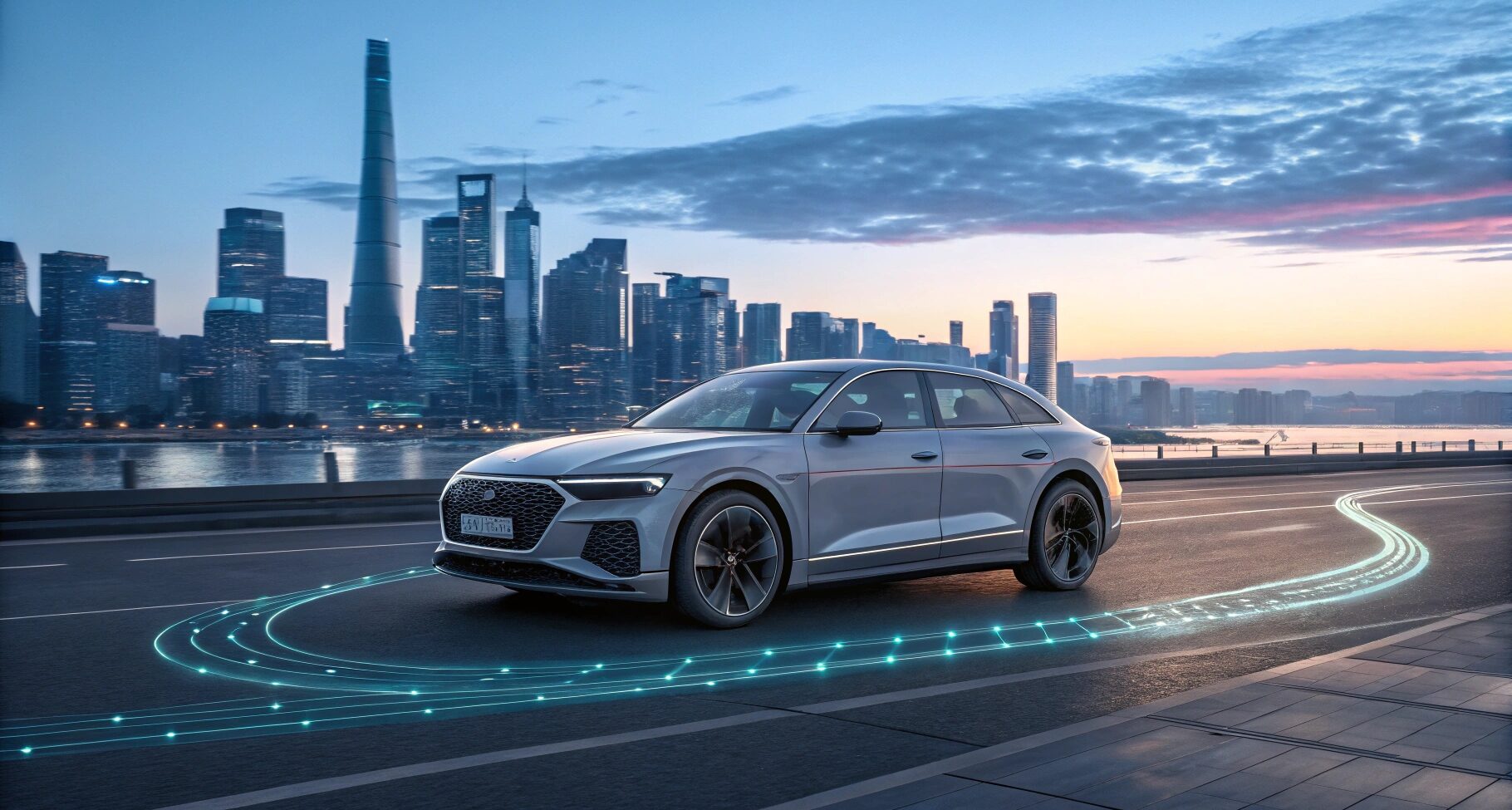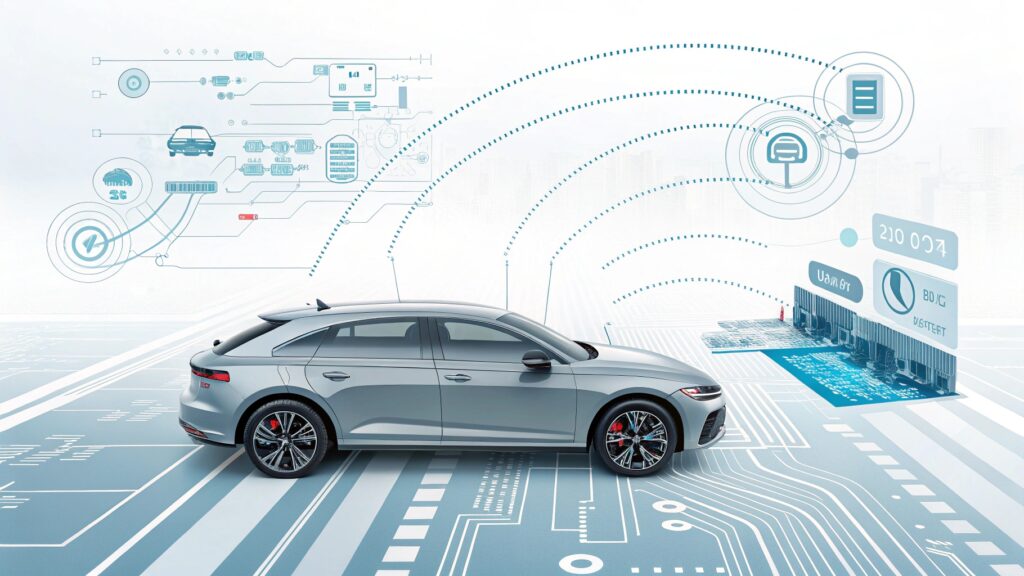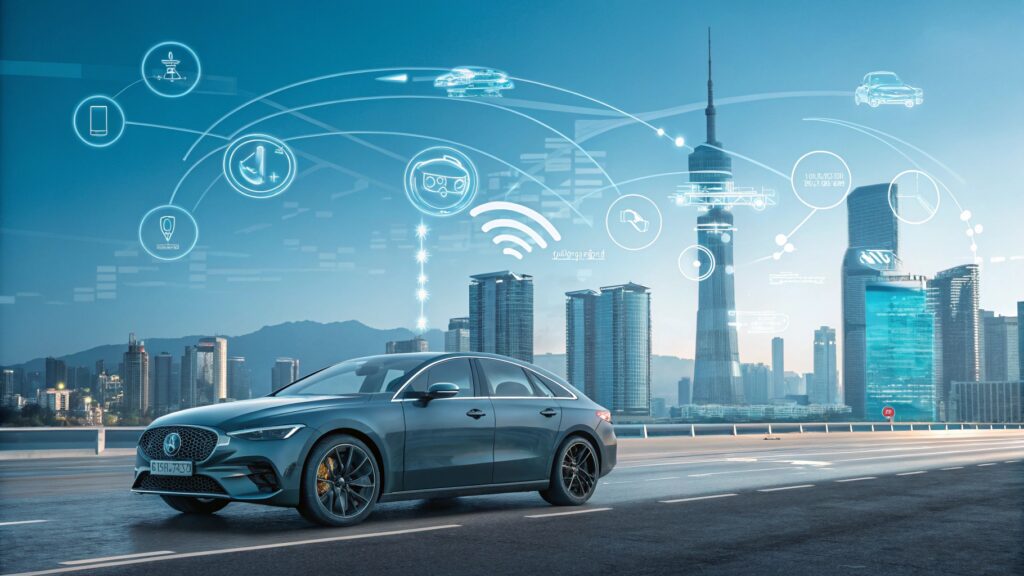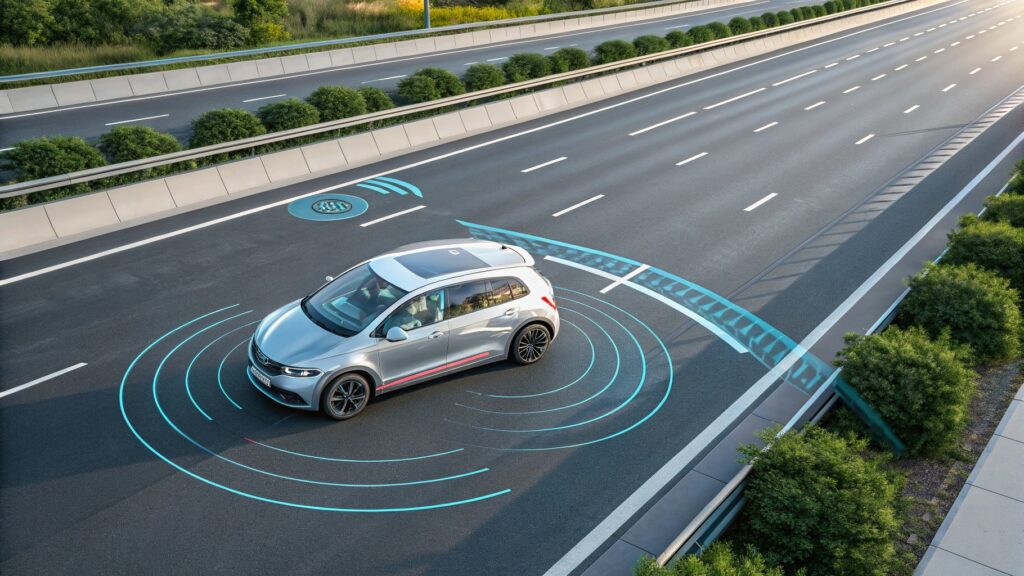
How AI in Automotive is Transforming Car Design and Safety Standards
The hum of an engine, the gleam of polished chrome – for decades, these were the hallmarks of automotive innovation. But in today’s rapidly evolving world, a new force is quietly, yet profoundly, reshaping the very essence of how cars are designed, built, and, most importantly, how safely they protect us. That force is Artificial Intelligence (AI). Far from being a futuristic concept, AI in automotive design and safety isn’t just a buzzword; it’s a fundamental shift. It drives an era of unprecedented intelligence and protection on our roads.
This isn’t just about self-driving cars. It’s about a complete overhaul of the automotive lifecycle. From the initial sketches of a vehicle’s form to the sophisticated systems that prevent accidents, AI takes the wheel. It steers us towards a future where cars are not just modes of transport, but intelligent partners in our daily lives. How exactly is this transformation unfolding? Let’s dive in.
The Dawn of Intelligent Design: How AI is Improving Modern Car Design
Gone are the days when car design was solely the domain of human intuition and painstaking manual iteration. Today, AI is improving modern car design in ways that were once unimaginable. Generative design leads this change. AI algorithms, given specific parameters like desired weight, strength, and manufacturing constraints, can rapidly generate thousands of design options. This isn’t just about aesthetics; it’s about optimizing every curve and component for maximum performance. For instance, General Motors (GM) utilizes generative design to create lighter, stronger parts for their electric vehicles, significantly enhancing structural integrity.
AI also plays a crucial role in material science optimization. It analyzes vast datasets of material properties, predicting how different composites and alloys will perform under various conditions. This allows engineers to select and even innovate new materials that enhance both vehicle performance and sustainability.
Furthermore, AI simulations are revolutionizing aerodynamics and fuel efficiency. Using advanced techniques like Computational Fluid Dynamics (CFD), AI simulates airflow over a car’s body with incredible precision. This allows designers to identify and refine subtle changes that significantly reduce drag, directly leading to more lightweight and fuel-efficient car designs. This integration of AI ensures that every new model is not just visually appealing, but also environmentally conscious and economically viable. Beyond the visible, AI even subtly influences personalization and ergonomics, helping tailor interior designs based on vast user preference data for ultimate comfort and accessibility.

Fortifying the Ride: The Role of AI in Vehicle Safety Features
Perhaps one of the most impactful areas where AI makes a difference is in vehicle safety. What role does artificial intelligence play in vehicle safety features? It’s no longer just about seatbelts and airbags; it’s about proactive systems that prevent accidents. This is where Advanced Driver Assistance Systems (ADAS), powered by AI, come into play. Features like automatic emergency braking (AEB), lane-keeping assist (LKA), adaptive cruise control (ACC), and blind-spot monitoring (BSM) are becoming standard. These systems actively work to mitigate risks. Data from the National Highway Traffic Safety Administration (NHTSA) indicates that ADAS features, such as AEB, can reduce rear-end crashes by 50%. This clearly shows the impact of these automotive AI safety features.
The magic behind many of these systems is sensor fusion. AI acts as the brain. It combines and interprets data from an array of sensors – cameras, radar, lidar, and ultrasonic sensors – to create a comprehensive, real-time understanding of the vehicle’s surroundings. This sophisticated data processing allows for incredibly accurate and rapid real-time decision-making. It enables the vehicle to react faster than a human driver to potential hazards. This is precisely how AI is improving car safety on a moment-by-moment basis. Moreover, advanced driver monitoring systems utilize AI to detect signs of driver fatigue or distraction, issuing alerts to help keep attention focused on the road, further solidifying AI vehicle safety.
Proactive Protection: Can AI Help in Predictive Safety Maintenance?

Beyond immediate accident prevention, AI also revolutionizes the very concept of vehicle upkeep. Can AI help in predictive safety maintenance? Absolutely. We’re moving beyond the traditional, reactive model of maintenance – fixing things only after they break – towards a proactive, predictive approach.
AI algorithms analyze real-time sensor data streaming from various critical components of a vehicle: the engine, brakes, tires, battery, and more. By identifying subtle patterns and anomalies in this data, AI predicts potential failures long before they manifest as serious problems. Imagine your car’s system alerting you that your brake pads will need replacement in the next 1,000 miles, rather than waiting for them to wear dangerously thin. This foresight offers tremendous benefits: reduced downtime for repairs, significant cost savings by avoiding catastrophic failures, an extended vehicle lifespan, and, most critically, enhanced AI vehicle safety by addressing potential issues proactively. For instance, Tesla continuously uses AI to analyze vehicle data for predictive maintenance, often addressing issues via over-the-air updates before drivers even notice a problem, directly impacting how AI is improving car safety through foresight.
Enhancing the Driving Experience: Benefits of AI-Powered Driver Assistance Systems
The advantages of AI-powered driver assistance systems extend far beyond just preventing crashes, though that remains their paramount benefit. These systems fundamentally enhance the entire driving experience, making it safer, less stressful, and more convenient.
Firstly, their role in accident prevention cannot be overstated. By constantly monitoring the environment and driver inputs, AI-powered ADAS actively intervenes to mitigate or avoid collisions. For example, the Insurance Institute for Highway Safety (IIHS) reports that forward collision warning with auto brake reduces front-to-rear crashes by 50%. These systems significantly contribute to automotive AI safety features by acting as an extra set of eyes and an immediate reaction force.
Secondly, these systems contribute to improved driver awareness. Even when a driver is attentive, AI can spot potential hazards or rapidly changing traffic conditions that might be missed. Whether it’s an alert for an unseen vehicle in the blind spot or a warning about an impending lane departure, AI acts as a vigilant co-pilot. This direct contribution to how AI is improving car safety by augmenting human perception is invaluable.
Furthermore, AI-driven ADAS features like adaptive cruise control and advanced lane-keeping reduce driver fatigue, particularly on long journeys. By automating repetitive tasks, drivers can remain more alert and less stressed, leading to a safer and more enjoyable ride. Beyond safety, features like intelligent parking assist and seamless navigation systems showcase how AI brings enhanced comfort and convenience, transforming the act of driving itself.
Revolutionizing Production: Is AI Reducing Human Error in Automotive Manufacturing?
The influence of AI isn’t confined to the car on the road; it’s deeply embedded in the very factories where vehicles are born. Is AI reducing human error in automotive manufacturing? The answer is a resounding yes, leading to higher quality, greater efficiency, and ultimately, safer cars.
One of the most significant applications is in automated quality control. AI-powered computer vision systems, equipped with high-resolution cameras and sophisticated algorithms, inspect components and assembled parts with unparalleled precision. These systems detect microscopic defects, misalignments, or imperfections that even the most trained human eye might miss. For instance, a report by McKinsey & Company highlighted that AI-powered visual inspection can achieve higher accuracy and consistency than human inspection, drastically reducing the chances of faulty parts making their way into a final vehicle. This application of deep learning in the automotive industry ensures a consistently high standard of production.
Beyond inspection, AI guides robotics and automation on the assembly line. Robots, powered by AI, perform precise and repetitive tasks, from welding and painting to intricate assembly, with unwavering accuracy. This minimizes the potential for human-caused errors stemming from fatigue, distraction, or variability in manual work.
AI also extends to predictive maintenance for manufacturing equipment itself. By monitoring the performance of machinery on the factory floor, AI predicts when equipment might need maintenance or repair. This prevents breakdowns that could lead to production errors or safety hazards for workers. Finally, AI optimizes supply chain management, ensuring the right parts are available at the right time, further reducing human errors associated with logistics and material handling.
The Road Ahead: AI in Vehicle Crash Prediction and the Future

As AI capabilities continue to advance, we are moving towards even more sophisticated safety applications, particularly in AI in vehicle crash prediction. This involves advanced algorithms, often built on deep learning in the automotive industry, analyzing vast and complex datasets. These datasets include not only real-world driving scenarios and accident statistics but also environmental factors, driver behavior patterns, and even real-time traffic conditions. By identifying subtle correlations and predictive indicators within this data, AI models become incredibly adept at anticipating potential crash risks even before they become imminent.
This predictive power is further enhanced by AI’s role in simulation and testing. Before a single physical prototype is built, AI can simulate countless crash scenarios and driving conditions in virtual environments. This allows engineers to refine safety systems, test new designs, and optimize vehicle performance in a cost-effective and highly efficient manner. This constant cycle of simulation, analysis, and refinement, driven by AI, is paramount in pushing the boundaries of AI vehicle safety.
Ultimately, the advancements in AI in vehicle crash prediction are paving the way for the next frontier in automotive safety: truly autonomous vehicles. By equipping cars with the ability to perceive, process, and predict like never before, AI is not just transforming car design and safety standards; it’s redefining the entire relationship between humans and their vehicles, moving us closer to a future of accident-free roads.
Conclusion
The automotive industry stands at the precipice of a revolutionary transformation, and Artificial Intelligence is undeniably its driving force. From the intricate details of AI in automotive design that sculpt more efficient and aesthetically pleasing vehicles, to the sophisticated automotive AI safety features that actively prevent accidents, AI reshapes every facet of how we interact with our cars.
We’ve explored how AI empowers predictive safety maintenance, keeps us safer with advanced driver assistance, and significantly reduces human error in manufacturing. Its continuous evolution, particularly in areas like AI in vehicle crash prediction and deep learning in the automotive industry, promises a future where vehicles are not just smarter and more connected, but fundamentally safer than ever before. As AI continues to mature, it’s clear that the future of driving will be defined by intelligence, foresight, and an unwavering commitment to occupant protection. The journey has just begun, and it’s an exciting one for everyone.
Read More Blog: https://industrifyai.com/the-role-of-artificial-intelligence-in-the-automotive-industry-from-car-design-to-smart-manufacturing/

